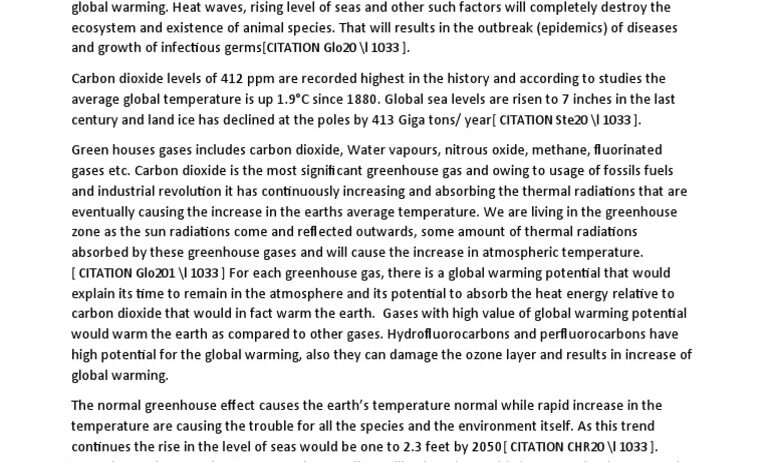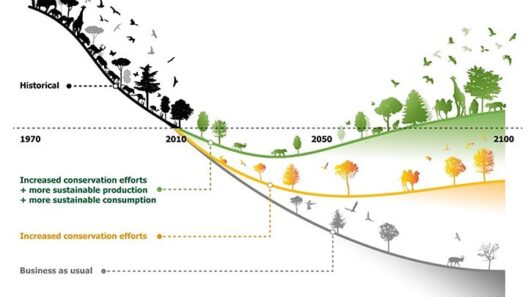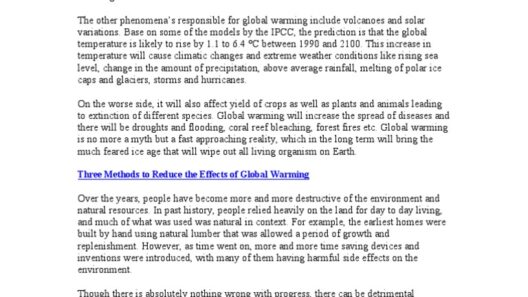Understanding the nuances of global warming potential (GWP) is essential in addressing the overarching issue of climate change. As the planet grapples with the effects of anthropogenic activities, elucidating the contribution of various greenhouse gases to global warming is critical. This article delves into GWP, providing a comprehensive examination of its implications for environmental policy and human health.
The concept of GWP is inherently tied to the chemistry of greenhouse gases. Each gas has a distinct ability to trap heat in the atmosphere, both in terms of its radiative efficiency and its longevity. GWP offers a standardized metric for comparing the impact of different gases; it quantifies their potential to warm the Earth over a specific time frame, commonly 100 years. This measure is pivotal for climate action as it aids policymakers in evaluating and prioritizing emissions reductions.
As the world transitions to a sustainable future, understanding which gases are most consequential is paramount. Carbon dioxide (CO2), methane (CH4), and nitrous oxide (N2O) are the principal greenhouse gases emitted by human activity. Each one possesses distinct GWP values, highlighting why a multifaceted approach is necessary when tackling climate change.
Carbon Dioxide: The Benchmark Greenhouse Gas
Carbon dioxide serves as the reference point for GWP calculations, assigned a value of one. While it is not the most potent greenhouse gas, the sheer volume of CO2 emissions from fossil fuel combustion and deforestation makes it the most significant contributor to global warming. Its atmospheric lifespan spans centuries, which means its impact persists long after emission. The long-term repercussions of elevated CO2 levels are evident, from rising sea levels to increased frequency of extreme weather events. Efforts to mitigate CO2 emissions are indispensable in the broader strategy of climate resilience.
Methane: A Potent but Short-Lived Threat
In contrast to carbon dioxide, methane boasts a GWP of 28-36 times that of CO2 over a 100-year period. Despite its shorter atmospheric lifetime of approximately 12 years, methane is significantly more efficient at trapping heat. Sources of methane emissions include livestock digestion, rice cultivation, landfills, and oil and natural gas extraction. Its intensity as a greenhouse gas underscores the importance of managing agricultural practices and waste disposal. The adoption of improved methane capture technologies could substantially diminish its atmospheric concentration, yielding immediate climate benefits.
Nitrous Oxide: The Silent Emissary
Nitrous oxide, with a GWP ranging from 265 to 298 times that of carbon dioxide, often remains under the radar compared to CO2 and CH4. Its primary sources include agricultural fertilizers, fossil fuel combustion, and industrial processes. The potency of nitrous oxide poses a grave challenge for climate mitigation. Controlling its emissions is complex, as it requires a transformation in agricultural practices and energy production systems. Raising awareness about the ramifications of excessive nitrogen fertilization could foster more sustainable practices among farmers.
The Role of Hydrofluorocarbons: Synthetic Gases of Concern
Hydrofluorocarbons (HFCs) emerged as substitutes for ozone-depleting substances, but they are rapidly attracting scrutiny due to their high GWP values. Some HFCs possess GWP levels that exceed 10,000 times that of carbon dioxide. These synthetic gases are primarily utilized in refrigeration, air conditioning, and aerosol propellants. Implementing policies focused on phasing down HFC production and consumption could significantly mitigate their contribution to global warming. International agreements like the Kigali Amendment to the Montreal Protocol have set ambitious targets to address the environmental impact of HFCs, emphasizing the need for global cooperation in climate action.
The Interplay of GWP and Policy
As the implications of climate change become increasingly dire, understanding GWP can inform more effective environmental policies. Strategies rooted in GWP considerations allow for a targeted approach to emissions reductions. By prioritizing gases with high GWP values, such as methane and HFCs, policymakers can achieve substantial climate benefits in shorter time frames. The science of F-gases and their extreme potency emphasizes the necessity of aligning national and international policies with comprehensive GWP assessments.
Consequently, the discourse surrounding GWP is paramount for fostering public engagement and advocacy for climate action. Educating communities about the impacts of different greenhouse gases and encouraging sustainable practices could galvanize broader support for climate initiatives.
A Unified Approach Towards a Sustainable Future
Addressing global warming requires a collective effort that transcends borders and industries. GWP provides a framework for understanding the differential impact of greenhouse gases, thus prioritizing interventions. Reducing the emissions of powerful greenhouse gases such as methane and nitrous oxide can yield immediate climate dividends. Likewise, transitioning to renewable energy sources can reduce dependence on carbon-intensive fossil fuels.
The challenge of global warming is, undeniably, one of the defining issues of our time. By integrating an understanding of global warming potential into the debate, stakeholders can better align efforts and strategies, propelling society towards a more resilient and sustainable future.







